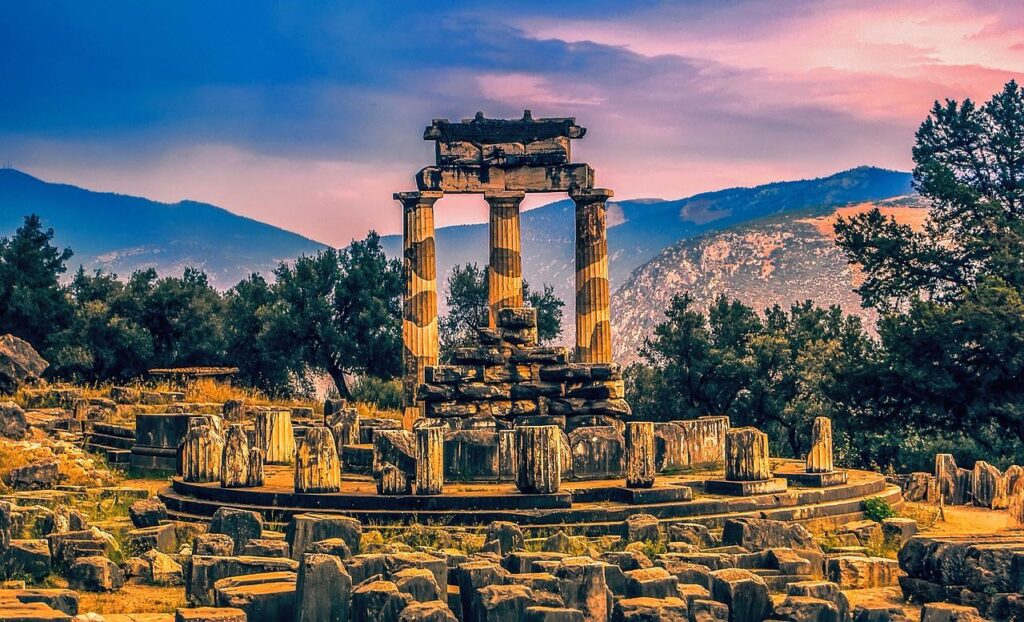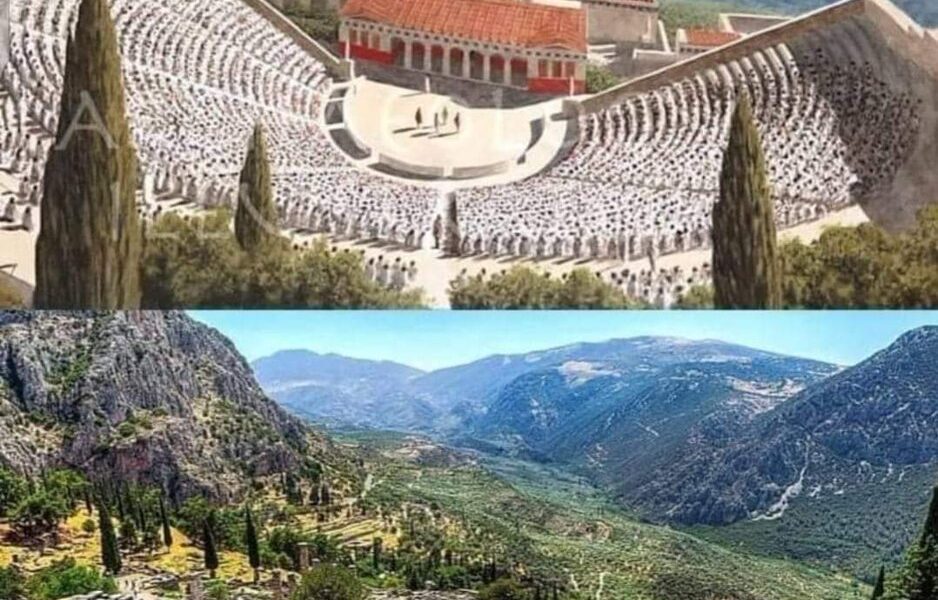The Ancient Theatre of Delphi, Greece: The ancient theatre in the archaeological site of Delphi, Greece, was built on the same hill as the Temple of Apollo, but it is located further above it.
Its location provided audiences with a great view of the entire sanctuary and the olive tree valley above. Dating back to the 4th century B.C., the theatre was constructed using the limestone of Mount Parnassus.
The ancient theatre of Delphi was incorporated into the sanctuary of Apollo, occupying the NW corner of the precinct. It is probably the largest building on the archaeological site. For its construction, a nearby building, possibly a treasury, was destroyed. The caveat, on the west, leans against the natural inclination of the hill, whereas on the east, it overrides a little torrent that leads the water of the fountain Cassotis right underneath the temple of Apollo.
The theatre was initially constructed in the early 2nd century A.D. An inscription bearing the date 160/159 B.C. refers to construction and repair works funded by the king of Pergamon Eumenes II. The pattern presents peculiarites, due to its position within the precinct: one gets the impression that the flanks of the cavea have been suppressed. The main building material is local limestone. The first three rows of the benches, the crepis on which the first row is founded and a narrow corridor around the orchestra have been built with building material coming from the destroyed treasury.
The orchestra was initially made into a full circle of a diameter measuring 7 meters and it was adjacent to the scene. The rectangular scene building, of which only the foundation is preserved, ended up in two arched openings, whereas access was possible through the parodoi, i.e. the special corridors. On the support walls of the parodoi were discovered large numbers of manumission inscriptions. The cavea was divided horizontally in two uneven zones via a horizontal corridor called diazoma. The lower zone had 27 steps and the upper one only 8; on these steps were constructed the stone benches. Six stairs divide the lower part of the cavea in seven tiers, whereas on the upper part the number of stairs and tiers is double. The theatre had a total capacity of 4.200-4.500 spectators.
On the occasion of Nero’s visit to Greece in 67 A.D. various alterations took place in the theatre. The orchestra was paved and surrounded by a stone parapet. The proscenium was replaced by a low pedestal, the pulpitum; its facade was decorated with scenes from Hercules’ myth in relief. Further repairs and transformations were carried out in the 2nd century A.D. The theatre was abandoned when the sanctuary declined in Late Antiquity.

The 35 rows of the theatre could seat nearly 5000 people, though the lower seats were constructed in the Hellenistic and Roman periods. The theatre went through many reformations. However, it has kept its basic structures: the stone seats, a round-shaped stage, and an orchestra. Today, it hosts many ancient plays and other cultural events, mostly in summer.
Read More Delphi’s Top 3 Attractions

